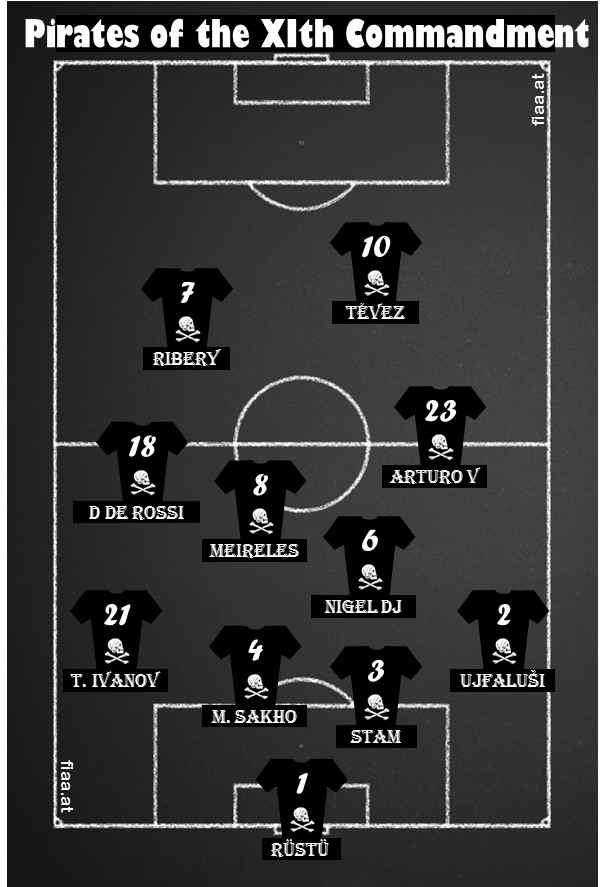Pirates are critical to a team’s success.
However, their impact depends on having the right number of pirates in the team. There should be at least one (of course) on the pitch, and no more than seven.
The optimal number depends, though, on which school of thought you belong to. The English school, for example, sees 1-3 pirates as offering the best chance of success. The Dutch school regard three as the very minimum. And the French school take a more subtle position, arguing that the optimum number depends on the piratical index of the opposition.
(Of course, the number of pirates also needs to be balanced with the number of Venus players in the team.)
Pirates are easily recognised. With their grim and sometimes frightening demeanour, it’s fairly easy to spot them on the pitch. Their number began increasing dramatically around 2005. Until then, most were natural pirates, i.e. players whose natural physical attributes caused them to look somewhat wild or frightening.
Many of the new-type of pirate work consciously on their appearance to achieve the maximum piratical effect, so they can impress fans and opponents alike with their tough looks. Key piratical indicators here are:
- a mohican (or shaved head)
- long, shaggy hair
- tattoos (often all over the body)
- aggressive, animalistic gestures
In most cases, pirates behave on the pitch much like they look, with a no-prisoners-taken playing style and full acceptance of the possibility of injury (to others or themselves).
Some examples: Raul Meireles, Arturo Vidal, Nigel de Jong, Mamadou Sakho, Martin Skrtel, Abel Xavier, Taribo West, Tomáš Ujfaluši, Daniele De Rossi, Marco Materazzi, Mario Balotelli.
Trifon Ivanov, Jaap Stam, Carlos Tevez oder Frank Ribery are (or, sadly, were) good examples of natural pirates.
It’s worth noting that many experts in the field now focus on piratical motivation: many of the “new” pirates have taken a conscious decision to become a pirate, accepting that this step is usually permanent – the reformed pirate is a very rare species of footballer indeed.
